#Utopian and dystopian fiction
Text
Best Malcolm McDowell movies and performances:
1. A Clockwork Orange - Stanley Kubrick (1971)
2. O Lucky Man! - Lindsay Anderson (1973)
3. Time After Time - Nicholas Meyer (1979)

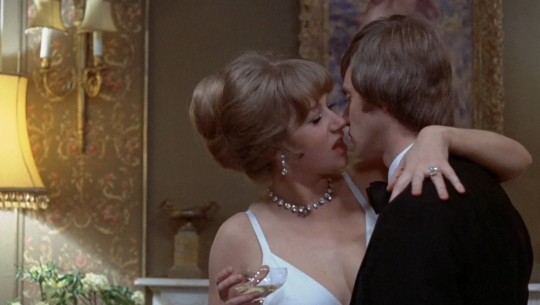
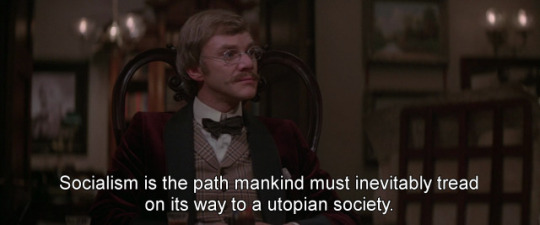
#malcolm mcdowell#a clockwork orange#o lucky man#time after time#stanley kubrick#lindsay anderson#nicholas meyer#1971#1973#1979#1970s#70s#1970s movies#70s movies#Utopian and dystopian fiction#comedy drama#science fiction film#crime film#fantasy film#david warner#anthony burgess#Mick travis#mary steenburgen#psychiatry#public school#Panavision#juvenile delinquency#If#Karl alexander#Alex
4 notes
·
View notes
Text
the fifth sacred thing, by starhawk: four and a half out of five honeybees
i've been looking forward to this book for a long time. it's a classic of utopian literature…and dystopian literature. can a pacifist society survive contact with a militarized society…and keep its soul intact?
the first third or so of the book establishes the community around which the book is based. an egalitarian commune has grown out of the rubble of post-apocalyptic san francisco, and they face all the challenges of life plus the dread of what could happen when the replacement for the old u.s. government comes knocking to "claim" its old territory. that government is an amalgam of corporate rule, military domination, and pseudoreligious oppression that controls every aspect of life, down to the water.
the book was written in 1993, and -- except for the frequent mentions of the ozone layer, which we were actually able to fix, it seems prescient. early reviewers called the mixture of fascism and pseudochristianity an "overused SF bugbear" (thanks wikipedia), but it's exactly what we're facing today. the question of whether we can survive peacefully -- whether we can transform the virulent enemy culture before it kills us or makes us monsters ourselves -- is the central question of the novel.
the portrayal of fascist rule is brutal. nothing is held back. this is not a novel for people who have ptsd flashbacks.
at the same time, the portrayal of mundo bueno -- the good world -- is so lavish and loving that it's worth reading the first third of the book just to see starhawk's vision of what is possible. witness the streets with clean fishing streams running beside them, the avenues lined with sweet fruit trees and verdant gardens. witness the love and freedom possible with a community of lovers. that's a major aspect of the book: it's an advertisement for the future. the future we can win if we set down divisions and power struggles of "race," gender, and class…a shamelessly queer and polyamorous future, i might add, and a future in which all ancestries and cultures are celebrated in a kind of joyful melange anchored in respect for the four sacred things, which cannot be owned or stolen -- earth, air, water, and fire -- and the most subtle of all, the fifth sacred thing, spirit.
it's a novel full of magic and miracles, but the thesis of the novel doesn't depend on anything supernatural: it just depends on the question of whether humanity can be awakened even in those in whom it has been deliberately crushed to make them subservient tools of a killing machine. what it really comes down to is the conscience of the universal soldier.
i'm going to end the review with this video, in the spirit of starhawk's call to compassion. what if they gave a war and, finally, nobody came? all told, a fantastic effort; a classic: five out of five honeybees
youtube
#the fifth sacred thing#you gotta read this book#utopia#dystopia#utopian fiction#dystopian fiction#scifi#sf#science fiction#fantasy#science fantasy#book review#book reviews#review#reviews#queer lit#starhawk#Youtube
5 notes
·
View notes
Text

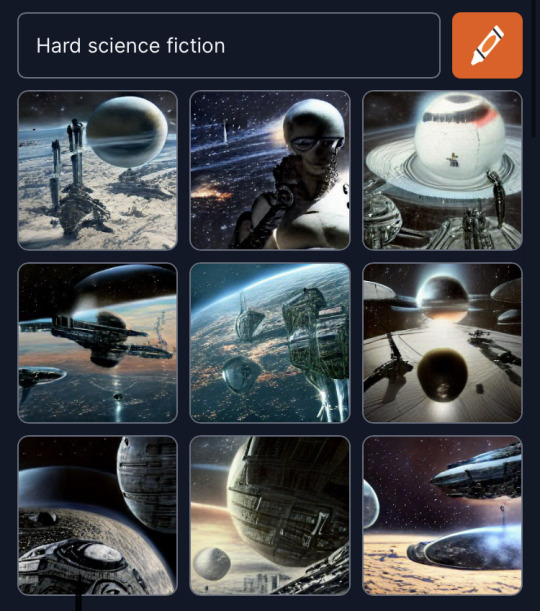
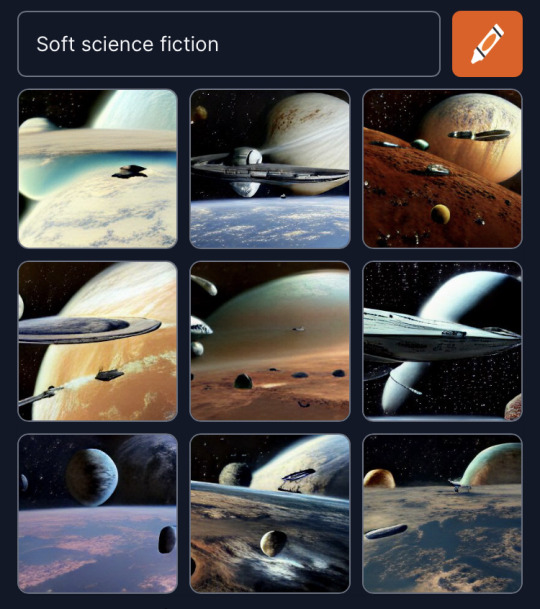

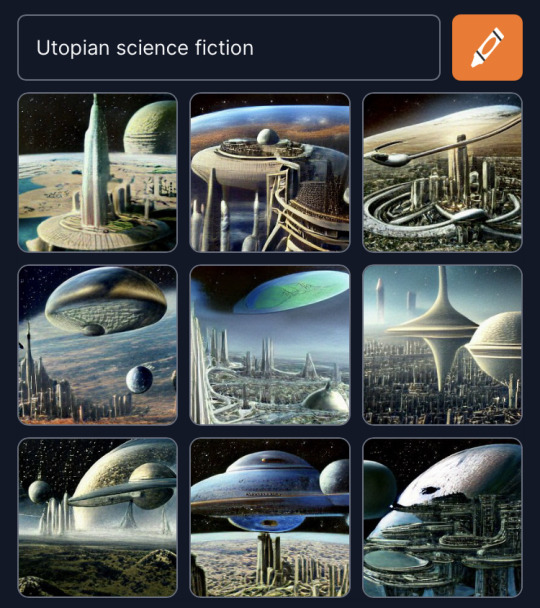



Craiyon + Sci fi sub genres
#unreality#sci fi#science fiction#genres#space opera#hard science fiction#soft science fiction#dystopian science fiction#utopian science Fiction#absurdist science Fiction#pulp science fiction
8 notes
·
View notes
Text
genre debates are sooooo boring to me. worst part of a lit degree
#speculative fiction science fiction magical realism literary fantastic dystopian utopian ustopian (?!??) cli-fi everyone shut the fuck up fr#this is what i get for being interested in “”genre fiction“”#surely there is something more interesting than the bookstore shelf label#like ive had enough
0 notes
Text
#cybernetics#artificial intelligence#robotics#biotechnology#augmentation#enhancement#evolution#transcendence#science fiction#dystopian#utopian#cyberpunk#humans#machines#androids#cyborgs#metacyborg#transhumanism#posthumanism#bionic#augmentedhumanity#enhancedhumanity#evolvedhumanity#transcendenthumanity#futurehumanity#sci-fihumanity#android#cyborg#humanmachinehybrid#metacyborgwarrior
0 notes
Text
A reverse hunger games novel
A teenage fascist overthrows a utopian society
1 note
·
View note
Text
I think everyone, every single individual person—even kids who want to!—every person across the entire world, in EVERY COUNTRY and EVERY CITY and EVERY RESERVATION, EVERY INDIGENOUS ISLAND, ETC., ETC., …… should have the ABSOLUTE & IMMUTABLE, UNIVERSALS RIGHT to slaughter one person of their choosing per year. JUST ONE PERSON CAN BE SLAUGHTERED BY SOMEONE ELSE FOR WHATEVER REASON THE BUTCHER FEELS LIKE FOR ANY GIVEN YEAR. plus you can choose not to kill ever at all! it’s not mandatory!
& so it’s written into a permanent, immovable, immutable , & UNIVERSAL law that applies to each and every individual human being of any age throughout the entire planet. AND!!! this is a PERMANENT LAW that cannot be touched ever again by anyone ever no matter who they are or how “important” they are. THAT SHIT IS IN THE BOOKS FOREVER AND IS AVAILABLE TO ALL OF HUMANITY FOR ALL ETERNITY & MORE!!! (and it will continue to be applied as law if we ever populate any new Earth-like planets we may eventually figure out how to live in them. YEAH BITCHES, I REALLY REALLY MEAN IT’S UNIVERSAL FOR ALL OF HUMANITY’S EXISTENCE!!! NO MATTER WHERE HUMANKIND LEARNS TO GO!! IT WILL ALWAYS AND ETERNALLY BE LAW.
SO!!! all across the globe the UN (which in my world includes people from so called “primitive” cultures) will make it an ABSOLUTELY UNTOUCHABLE world wide law (because in my world everyone is sane and lovely and there’s world peace and no poverty or homelessness & there are no billionaires or even millionaires, or anything inhumane like our IRL world right now!!!!!).
AND!! AND!!! AND!!! NO!!!! NO, IT’S NOT LIKE THE STUPID PURGE MOVIE! WHERE IT’S ONLY LEGAL FOR EVERYONE THAT LIVES IN THE ONE SINGLE TOWN/STATE (?). IT’S NOT AN ANNUAL ONE DAY THING WITH NO LAWS.
WHAT I MEAN, is that there’s like a little punch card you can keep in your wallet like a library card or a like…froyo BUY ONE GET ONE FREE store…. BECAUSE!!!! BECAUSE!!! every year, like idk you get to go to some government building where you make an appointment— (which in my world is EASY AND SIMPLE AND QUICK TO DO AND IT’S ADA COMPLIANT!!! SO THERE WOULD BE TONS OF OPTIONS THROUGH WHICH YOU CAN MAKE YOUR APPOINTMENT, IRL OR ONLINE OR ON THE PHONE CALL OR THROUGH A TEXT!!! AND WHATEVER FUTURE TECH BECOMES AVAILABLE!!).
but YES!!! once you’ve picked out your own special murder person (or not so special—your kill person can be as randomly chosen as if you were drawing straws!) but yes, once you’ve decided on who you’re gonna slaughter that year, you HAVE to make an appointment with the official governmental slaughterhouse, and at that initial appointment you must give the attendant a rough estimate of the date and time you will have to have chosen in advance on which date and time you will slaughter your person, & THEN, ONCE YOU’RE REGISTERED AND YOUR DATE, TIME, AND PERSON TO KILL IS WRITTEN INTO THE OFFICIAL UNIVERSAL GOVERNMENTAL SLAUGHTER LOG BOOK, YOU GET TO GO MURDER THAT PERSON HOWEVER YOU WANT WHEN YOUR APPOINTMENT TIME COMES UP. you can kill your person quick & easy, slowly and agonizingly drawn out……even purely sadistic and vomit-worthy extreme torture (live cannibalism included!)
after you’ve slaughtered your person, you’ll then have up to one full month from your murder day to set up a follow up appointment with a sample of your person’s body (maybe the full body is generally the norm, but more extreme butchers can instead bring a sample of what is left of your person) for IDing and global population census purposes so the attendants are able to confirm your one legal kill for the year.
AAAAAAND!!! when you go to your local government official slaughterhouse (that are all conveniently located all over everywhere & every single building or office is conveniently disability friendly/supportive to those with physical disabilities! or there would be digitally sourced governmental slaughterhouse), SO!!!when you go there, the attendant will punch your legal, annual slaughter card with a cutesy lil hole puncher—like a star a heart or a silly face—& there you go!!! you got to (if you chose to, the law DOES NOT force people to kill others if they don’t want to! even if they never choose to kill anyone for their entire lifespan!), you got to brutally murder someone!!!!! completely legally and in fact, endorsed! like hunting invasive animals in your area. I imagine there are the occasional billboards or media ad every couple times a year that reminds people it’s an option for everyone around the world!
PLUS!!! NO ONE CAN CHOOSE THE SAME PERSON TO KILL!!! in every city state county providence farm land reservation indigenous island, etc., etc., literally everywhere across the world has easy access to a worldwide universal database that consists of every single human being on the planet, living and deceased’s (or slaughtered lol) general basic demographics (i.e., name age location job or school, etc.) it’s like, instead of being assigned a social security card/number, when someone new is born, the newborn is immediately added to the database. AND THEN!!! every year on each individual human being’s birthday, their personal identification information must be updated. literally for every single individual in the entire world anywhere and everywhere in the world will have their basic information in that world-wide-accessible database. And perhaps this kind of updating of demographics is achieved by sending out MANDATORY surveys (that are always accommodated appropriately for any and everything of every known disability, no matter if it’s physical or mental disabilities!)
and ALSO!!! these official governmental slaughterhouses must have at least two or three convenient locations in every single place on earth that is populated by humans. at these specific murder government buildings, you MUST confirm your person has been murdered by you (maybe ideally you’d have to bring the whole dead body, or at least a piece of the dead body for more extreme slaughters).
but THEN if you kill someone else after you turned in your punch card for the year, or purposely killer someone else’s booked murder person, THEN it’s illegal and you go to prison for at least a year, max 2 years lol (in my world the prisons are more like Holiday Inn hotels & NOTHING like what prisons are like in our current IRL world). you get to slaughter one person every year, but you can choose not to one or more years (or never ever!) if there’s just no one interesting or fun enough for you to murder. BUT, remember you’ve got the punch card?!?!?! so THEN, once you’ve collected 10 punches on your card you get a free bonus 2nd slaughtering of your choice in the same year! BUT IT HAS TO BE IN THE SAME YEAR OR YOU LOSE YOUR FREE SECOND YEARLY SLAUGHTERING OPPORTUNITY & YOU GOTTA START YOUR PUNCH CARD ALL OVER AGAIN. NO ROLL OVERS FOR YOUR ANNUAL MURDERING ALLOWANCE!!!
…….. ANYWAY. I have not a clue where this idea sprung from, nor why I felt so compelled to write it all out. but I think it’d be neat lol
thanks for reading my ramblings if you got through it all!! if you feel like it, tell me your opinions on this kings thing! like what you’d do differently or just to tell me i’m extremely mentally disturbed gehehe.
ok byyyye….luv u
🐶🙏💜✨
#writing#story#fiction#scifi writing#dystopian future#utopian fiction#utopian future#writers of tumblr#writers on tumblr#this was a lot of fun to write heehee#💜#read more#long post
0 notes
Text
An excerpt of me ranting to my friend after he sent me some Christian abstinence poster. That’s all the context you’ll get out of me
“Yea because humanity’s only made it this far because no one’s fucked ever! You’re parents weren’t joking about a stork dropping you off on their porch.
The storks grow everyone in big bats of genetic material, stirring occasionally to see if a baby is growing and when one is big enough they scoop it out with a net. Like a sad pool boy scooping dead raccoons out of a pool. Except instead of a dead raccoon it’s you or another baby.”
1 note
·
View note
Text
Cities of the Future - The Big City Archetype | Dystopian cities, Futuristic cities, Utopian cities
Cities of the Future – The Big City Archetype | Dystopian cities, Futuristic cities, Utopian cities
Cities of the future begin with connectivity. They are the antithesis of small towns.
A small town is a town that can’t contain you. Instead, it chokes you. It chokes your bigness. You’re too large for it. The natural design of your mind, everything you’d naturally try to accomplish, all of it is choked down by the small town’s infrastructure, which becomes its barrier against your…
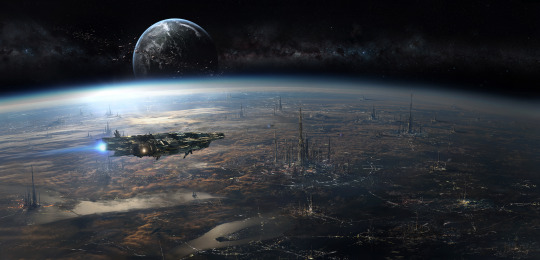
View On WordPress
#cities#cities of the future#Dreamfall Chapters#dystopia#dystopian cities#europolis#fiction#futuristic cities#interstellar travel#machine city#sci-fi#science fiction#technological advancements#technology#the capitol#the hunger games#the matrix#utopia#utopian cities
0 notes
Text
I am once again posting the solarpunk manifesto because I keep seeing people saying that solarpunk is just an aesthetic
Inspired by Solarpunk: A Reference Guide and Solarpunk: Notes Towards a Manifesto
A Solarpunk Manifesto
Solarpunk is a movement in speculative fiction, art, fashion, and activism that seeks to answer and embody the question “what does a sustainable civilization look like, and how can we get there?”
The aesthetics of solarpunk merge the practical with the beautiful, the well-designed with the green and lush, the bright and colorful with the earthy and solid.
Solarpunk can be utopian, just optimistic, or concerned with the struggles en route to a better world , but never dystopian. As our world roils with calamity, we need solutions, not only warnings.
Solutions to thrive without fossil fuels, to equitably manage real scarcity and share in abundance instead of supporting false scarcity and false abundance, to be kinder to each other and to the planet we share.
Solarpunk is at once a vision of the future, a thoughtful provocation, a way of living and a set of achievable proposals to get there.
We are solarpunks because optimism has been taken away from us and we are trying to take it back.
We are solarpunks because the only other options are denial or despair.
At its core, Solarpunk is a vision of a future that embodies the best of what humanity can achieve: a post-scarcity, post-hierarchy, post-capitalistic world where humanity sees itself as part of nature and clean energy replaces fossil fuels.
The “punk” in Solarpunk is about rebellion, counterculture, post-capitalism, decolonialism and enthusiasm. It is about going in a different direction than the mainstream, which is increasingly going in a scary direction.
Solarpunk is a movement as much as it is a genre: it is not just about the stories, it is also about how we can get there.
Solarpunk embraces a diversity of tactics: there is no single right way to do solarpunk. Instead, diverse communities from around the world adopt the name and the ideas, and build little nests of self-sustaining revolution.
Solarpunk provides a valuable new perspective, a paradigm and a vocabulary through which to describe one possible future. Instead of embracing retrofuturism, solarpunk looks completely to the future. Not an alternative future, but a possible future.
Our futurism is not nihilistic like cyberpunk and it avoids steampunk’s potentially quasi-reactionary tendencies: it is about ingenuity, generativity, independence, and community.
Solarpunk emphasizes environmental sustainability and social justice.
Solarpunk is about finding ways to make life more wonderful for us right now, and also for the generations that follow us.
Our future must involve repurposing and creating new things from what we already have. Imagine “smart cities” being junked in favor of smart citizenry.
Solarpunk recognizes the historical influence politics and science fiction have had on each other.
Solarpunk recognizes science fiction as not just entertainment but as a form of activism.
Solarpunk wants to counter the scenarios of a dying earth, an insuperable gap between rich and poor, and a society controlled by corporations. Not in hundreds of years, but within reach.
Solarpunk is about youth maker culture, local solutions, local energy grids, ways of creating autonomous functioning systems. It is about loving the world.
Solarpunk culture includes all cultures, religions, abilities, sexes, genders and sexual identities.
Solarpunk is the idea of humanity achieving a social evolution that embraces not just mere tolerance, but a more expansive compassion and acceptance.
The visual aesthetics of Solarpunk are open and evolving. As it stands, it is a mash-up of the following:
1800s age-of-sail/frontier living (but with more bicycles)
Creative reuse of existing infrastructure (sometimes post-apocalyptic, sometimes present-weird)
Appropriate technology
Art Nouveau
Hayao Miyazaki
Jugaad-style innovation from the non-Western world
High-tech backends with simple, elegant outputs
Solarpunk is set in a future built according to principles of New Urbanism or New Pedestrianism and environmental sustainability.
Solarpunk envisions a built environment creatively adapted for solar gain, amongst other things, using different technologies. The objective is to promote self sufficiency and living within natural limits.
In Solarpunk we’ve pulled back just in time to stop the slow destruction of our planet. We’ve learned to use science wisely, for the betterment of our life conditions as part of our planet. We’re no longer overlords. We’re caretakers. We’re gardeners.
Solarpunk:
is diverse
has room for spirituality and science to coexist
is beautiful
can happen. Now
-The Solarpunk Community
66 notes
·
View notes
Text
List of Genres
Fictional literature
Action
Adventure
Comedy
Crime
Cyberpunk
Dark Comedy
Detective Story
Dystopian
Epic
Fable
Fairy Tale
Fantasy
High Fantasy
Historical
Horror
Low Fantasy
Magical realism
Murder Mystery
Mystery
Psychological thriller
Romance
Romantic Comedy
Satire
Science fiction
Space Opera
Space Western
Steampunk
Supernatural
Thriller
Urban Fantasy
Utopian
Western
Add more in the comments if you like!
#list of genres#creativepromptsforwriting#writing ideas#writing inspiration#writing#creative writing#writeblr#genres
717 notes
·
View notes
Text
the problems with lancer are really interesting because i think there's one core problem and then a lot of sub problems that contribute to it.
the core problem is that the game very loudly and openly tells you its thesis statement: lancer is about a utopian society. it couches this, it says it's a 'flawed' and 'progressing' utopia, but every part of the text, including the definitely non-diegetic stuff, is very clear about this thesis statement. then the text of lancer does not live up to this thesis statement at all, and instead describes a social imperialist power that despite being allegedly 'post-scarcity' retains all the trappings of a capitalist society, with an honest-to-god 'civilizing mission' attitude to the rest of humanity.
there's three main contributors to this. in descending order, i think contributing factor one is that Lancer does not have the political imagination to describe a utopian society. like it bandies around the word 'post scarcity' but cannot actually imagine a society without wealth disparity, without a developed core and an 'undeveloped' periphery.
contributing factor two is that the writers clearly had a lot of cool ideas for sci-fi hooks and incorporated them all even when they contradict the thesis statement. like, everything around NHPs and shackling is genuinely really compelling and interesting and could make a great aspect of a dystopian science fiction piece. the fact that they're actually an integral and unquestioned part of this allegedly utopian society instead is baffling.
contributing factor three is that the game is still about fighting people in giant robots and so the writers have to come up with compelling reasons to fight people. this is hard, but not impossible, in a utopian setting. however, probably the absolute worst possible way one could do this is 'some people on the periphery don't want to be part of our utopian state. and so we have to fight them about it'. this is what lancer does
all of these things come together to create a baffling text that just kind of straight up lies to you about what it contains and what it is telling you. a deeply weird experience.
game's pretty good though
402 notes
·
View notes
Text
Just putting this out here cause I had to explain it to my mom, but here are the types of fiction (sorry if I leave out any)
Urban fantasy aka “I live in a modern society but turns out the creatures of old live in the forest” Ex: The Raven Boys by Maggie Stiefvater
Paranormal (Romance) aka “My sexy neighbor is secretly a werewolf/vampire and I’m a human teenage girl” Ex: Twilight by Stephanie Meyer
Epic Fantasy aka “This is a crazy quest isn’t it my dear found family” Ex: Six of Crows by Leigh Bardugo
High Fantasy aka “This is a crazy quest of prophecy isn’t it my dear found family oh look a dragon” Ex: The Lord of the Rings by J R R Tolkien
Dystopian aka “This future world is apocalyptic and quite obviously favors the rich” Ex: The Hunger Games by Suzanne Collins
Utopian aka “This future world seems peaceful on the outside but that just covers all the absolutely insane problems only this 16-year-old can fix” Ex: The Lunar Chronicles by Marissa Meyer
#booklr#bookblr#booknerd#book blog#booklover#booksbooksbooks#bookish#bookworm#books#character tropes#book tropes#book genres#book geek#genre: fantasy#genre: young adult#genre: romance#explanation#just leaving this here#urban fantasy#epic fantasy#high fantasy#paranormal romance#paranormal#dystopia#utopia#the raven cycle#six of crows#lord of the rings#twilight#the lunar chronicles
41 notes
·
View notes
Note
do you have any advice for writing a story set in the future? like a story ab immortal characters that has a 100 year time jump where you can see the differences from say present day NYC to NYC in 2123 but its not outlandish or unrealistic
How to Write a Story Set in the Future
The future is a blank canvas, a place where anything is possible. This can be both a blessing and a curse for writers. On the one hand, it gives you endless possibilities to explore. On the other hand, it can be difficult to know where to start. Here are our quick tips:
Start with a strong idea
Decide what kind of future you want to write about and what role you want technology to play. Do you want to write about a dystopian future where technology has taken over? A utopian future where humans have solved all their problems using technology? Or has technology completely failed, and the future in your book looks more like our past?
Once you have a strong idea, you can start to flesh out your world and characters. Knowing how you want your future to look is the first step in knowing how to get there.
Do your research
The more you know about the present, the more believable your future story will be. Read books and articles about current trends, and think about how those trends might develop. You can also use your imagination to come up with new technologies and ideas, but they should be grounded in realistic development and fit within your story world.
There are some amazing non-fiction books to help you get the science right in your fiction, but you can also draw inspiration from the way that fiction authors tackle the subject. You can find a list of recommended non-fiction books to get you started in this post.
Be specific in your worldbuilding
When you’re describing your future world, don’t be afraid to get specific. What does the technology look like? How does it work? What are the social and political implications of this technology?
You don’t necessarily have to include all the minute detail in the content of your story, but knowing it for yourself, so it informs the way you write and what you can assume your characters know, will help you build out a stronger world.
The more specific you are in the world you build, the more immersive your story will be. But, focusing too much on the minute detail of your story will affect the pacing, so make sure you share only what is relevant.
Consider the time period
How far in the future is your story set? This will affect the technology, culture, and social norms of your world.
A world 50 years in the future will look very different from a world 2000 years in the future. Compare our current reality with the late 20th century vs the beginning of the 1st century, and you’ll see how big a part this can play in the way your story develops.
The rate of technological development in your setting is also important to consider. Will technology develop at the same pace as it currently does? Or will it stagnate or decline? If so, think of the reasons why this might be and how it fits into your plot.
Be creative
Don’t be afraid to come up with new ideas and concepts. The future is unknown, so let your imagination run wild.
But, with that said, there needs to be some logic to your ideas. If your future contains bio-engineered lettuce that gives people superpowers, there needs to be a reason for that. A cool thing for the sake of a cool thing will often break a reader’s immersion.
You want readers to be able to follow your ideas and believe in them. So making sure they fit and work within the context of your story is just as important as being imaginative.
#writers#creative writing#writing#writing community#creative writers#writers of tumblr#writeblr#writing inspiration#writerblr#writing tips#quick writing tips#writing advice#writing tips and tricks#writing resources#writing help#help for writers#advice for authors#advice for writers#references for writers#writing the future#writers corner#story idea#let's write#learn to write
91 notes
·
View notes
Text
The Finances of Cyberpunk Dystopia
The dazzling neon lights, gritty streets, and high-tech innovations painted in the cyberpunk landscape have always been an intoxicating visual. But if you peel away the layers, you'll find a core deeply rooted in economic disparity, corporate overreach, and alternative financial systems. This genre, encapsulated in books, TV shows, films, games, and anime, has often painted a dystopian view of future financial systems. Let’s delve into the intricate details of these economic portrayals.
Corporate Currency and Credits
One of the most prominent themes in cyberpunk is the omnipresence of mega-corporations. These entities have grown so influential that they have their own currencies, rendering national currencies obsolete. Think of the Eurodollars in "Cyberpunk 2077", or the corporate credits in "Neuromancer". These universal credits are often digital and can be traded, earned, and stolen, not too dissimilar to cryptocurrencies today.
Cryptocurrencies and Digital Assets
Many cyberpunk tales, like Neal Stephenson's "Snow Crash", hint at decentralized digital currencies. In these narratives, individuals rely on these currencies for anonymous transactions. With the rise of Bitcoin and other cryptocurrencies, this vision seems closer to reality than fiction. Cryptocurrencies represent a decentralized, peer-to-peer financial system where transactions are recorded on a blockchain, away from the prying eyes of governmental institutions.
Bounty Systems
With the decline of conventional law enforcement in some cyberpunk depictions, there's a rise in privatized justice. This includes bounty systems where individuals or groups are paid to enforce laws or hunt down criminals. "Altered Carbon" and "Cowboy Bebop" both provide glimpses into such a world. While bounty hunting has historical precedents, its heightened prevalence in a tech-driven world could be a potential future scenario, especially with the privatization of many sectors.
Barter and Trade Systems
In a world where digital surveillance is rampant, going off-grid and relying on barter becomes appealing. Some cyberpunk stories show characters trading goods and services directly, without the need for a standardized currency. This throwback to ancient economic systems is a form of resistance against corporate and state surveillance.
Resource-Based Economy
Some stories, like those in the "Eclipse Phase" game, depict a future where humanity has moved beyond the constraints of money. Instead, resources are allocated based on need and sustainability. This post-scarcity economy is often made possible by advanced technologies like nanofabricators, which can produce almost any item on-demand. While it sounds utopian, it raises questions about value, motivation, and societal organization.
Which Are Most Likely?
Given the rapid advancement of technology, especially in the finance sector, the notion of cryptocurrencies and digital assets seems to be the most probable. We're already witnessing a shift towards digital transactions and the rise of decentralized finance (DeFi).
Corporate currencies, on the other hand, while possible, would require an immense concentration of power in the hands of a few entities - a scenario which many governments would likely resist. As for bounty systems, while privatized law enforcement is a possibility, it's one many would hope remains fiction.
The beauty of the cyberpunk genre is its ability to reflect our societal concerns and amplify them. Whether it's a cautionary tale or a speculative future, these financial landscapes provoke thought and inspire debate about the direction in which we're headed.
- REV1
34 notes
·
View notes
Text
#cybernetics#artificial intelligence#robotics#biotechnology#augmentation#enhancement#evolution#transcendence#science fiction#dystopian#utopian#cyberpunk#humans#machines#androids#cyborgs#metacyborg#transhumanism#posthumanism#bionic#augmentedhumanity#enhancedhumanity#evolvedhumanity#transcendenthumanity#futurehumanity#sci-fihumanity#android#cyborg#humanmachinehybrid#metacyborgwarrior
0 notes